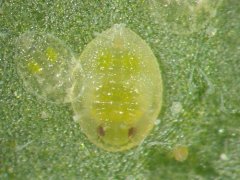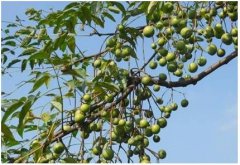Integrated pest control: crop pest control in crop pest control
Have you ever heard of using natural pesticides to control diseases? Want to know? Let's take a look. Natural pesticides that can control diseases can be divided into plant composition, mineral composition, plant plus mineral composition and other four types according to their composition sources.

The first category: plant composition
Plant extract:
Plant ash:
Spreading on leaves can control leaf diseases and drive away pests. Usually put the plant ash into a cloth bag and hit it with a stick when there is dew in the morning to make it fall on the leaves.
Fumigation:
The person who smoulders the rice husk and chars it is called coal, and if it burns too much into white powder, it is called rice husk ash. Coal and rice husk ash are high in potash and can be used as natural potash fertilizer. Fumigated charcoal mixed with comprehensive microbial black sugar water and then mixed with compost can be used or directly applied to sowing or planting lines, which can not only help crops grow, but also control soil diseases.
Loquat leaf vinegar:
To control the soft rot of cabbage or Shandong cabbage, pick 10 loquat leaves, soak them in 1 liter of rice wine for the first month, add 2 liters of vinegar, dilute 20 times, then spray.
The second category: mineral composition
1. Hydrated lime: used to control rice fever or other diseases. Putting the hydrated lime into a cloth bag and hitting it with a stick to land on the crop leaves can not only control germs, but also thicken and toughen the leaf color, but too much will wither.
two。 Sulfur powder: it has been used as a fungicide for thousands of years, but it does not really kill fungal spores, but forms a film on the leaf surface that will prevent fungal spores from germinating. So after rain, the sulfur film may be partially washed off and lose its effect, and must continue to be sprayed. In addition to the rust ticks and leaves mentioned above, it can mainly control brown rot, leaf spot, powdery mildew and sore.
The third category: plant plus mineral composition
1. Hydrated lime plant ash: used to control Fusarium wilt and Fusarium wilt of Solanaceae. Dig a hole about 15 cm deep and 5 cm in diameter at 10 cm from the plant, and dig 20 cm deep at fruiting stage, each with a cup of plant ash and hydrated lime.
two。 Vanishing lime plant gray camphor: used to control bacterial blight. Weigh 20 grams of camphor, crush as much as possible, 2 liters of plant ash, 200 grams of lime, add 5-10 liters of water. When in use, dig a hole 5 cm deep 10 cm from the base of the hybrid plant, pour a cup of water into each hole, and cover a small amount of soil, then all kinds of insects and fungi will disappear, root vitality will be enhanced, and new buds will be produced immediately.
- Prev

How to treat whitefly? What is the control method of whitefly and what medicine is used for whitefly?
We should understand the characteristics of pests and various control methods, apply correct control techniques, observe the safe harvest period, change farming management methods, and select pesticides with low toxicity to natural enemies in order to protect or release natural enemies, so as to reduce pesticide residues and pollution and ensure hygiene.
- Next

Neem: can neem seed extract kill insects? Is neem oil effective in killing insects?
Have you heard of neem insecticides? This is an insecticide made from insecticidal ingredients extracted from plants. The development and use of neem insecticides seems to have become a world trend. I can see that neem has been used as a road tree in some places in Thailand and flower markets around the country.
Related
- A one-day flower show brings 130 million yuan in orders! Nanhai, this Phalaenopsis exhibition is amazing
- What do the flower language and meaning of Lutheran tree mean? Precautions for planting Lutheran tree
- Encounter Chaoshan Kongfu tea, not without this cup of Phoenix single clump
- The durian market in Vietnam and Thailand is flooded. The price of imported durian has plummeted by 30-40% in a month.
- Shanghai solved the problem of local vegetable supply by planting 80,000 mu of green leafy vegetables.
- Wageningen University has become the best agricultural university in the world for the seventh time in a row.
- The strongest export season of South African grapes is full of challenges, with exports to Russia falling sharply by 21%.
- Sri Lanka is on the verge of bankruptcy, "Tea for debt" Organic Agriculture Revolution aggravates the Food crisis?
- Turning waste into earthworm manure and worm manure into organic fertilizer-A new choice for auxiliary farming
- Organic rice growers shoulder the responsibility of nurturing agricultural talents! Yinchuan Sustainable Farm with Organic Life Camp

